History
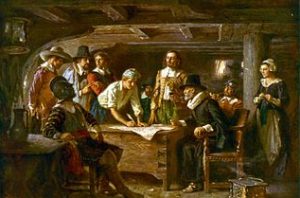 The September 6, 1620 trip to the new world, in which 102 passengers, who had been dubbed Pilgrims by William Bradford, one of the passengers who would become the first governor of Plymouth Colony, was a crowded, grueling trip on the Mayflower to a new life in the New World. The trip was filled with hardship, and sometimes even loss. Nevertheless, the pilgrims knew it had to be taken. The situation actually began in 1606, when a group of reform-minded Puritans in Nottinghamshire, England, founded their own church, that was separate from the state-sanctioned Church of England. This was truly the reason why “Freedom of Religion” is such an important part of our constitution. Many people dispute that fact that our nation was formed on religious principles, but it was, from the very core of the move here.
The September 6, 1620 trip to the new world, in which 102 passengers, who had been dubbed Pilgrims by William Bradford, one of the passengers who would become the first governor of Plymouth Colony, was a crowded, grueling trip on the Mayflower to a new life in the New World. The trip was filled with hardship, and sometimes even loss. Nevertheless, the pilgrims knew it had to be taken. The situation actually began in 1606, when a group of reform-minded Puritans in Nottinghamshire, England, founded their own church, that was separate from the state-sanctioned Church of England. This was truly the reason why “Freedom of Religion” is such an important part of our constitution. Many people dispute that fact that our nation was formed on religious principles, but it was, from the very core of the move here.
On November 11, 1620, the Mayflower anchored at what is now Provincetown Harbor, Cape Cod. Of course, it was mandatory that they scout out the new land to make sure it 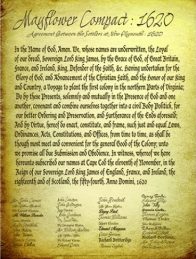 was safe before bringing the women and children there. Before going ashore, 41 male passengers…heads of families, single men and three male servants…signed the famous Mayflower Compact, agreeing to submit to a government chosen by common consent and to obey all laws made for the good of the colony. Over the next month, several small scouting groups were sent ashore to collect firewood and scout out a good place to build a settlement.
was safe before bringing the women and children there. Before going ashore, 41 male passengers…heads of families, single men and three male servants…signed the famous Mayflower Compact, agreeing to submit to a government chosen by common consent and to obey all laws made for the good of the colony. Over the next month, several small scouting groups were sent ashore to collect firewood and scout out a good place to build a settlement.
Around December 10, one of these groups found a harbor they liked on the western side of Cape Cod Bay. They returned to the Mayflower to tell the other passengers, but bad weather prevented them from docking until December 18. After exploring the region, the settlers chose a cleared area previously occupied by members of a local Native American tribe, the Wampanoag. The travel weary pilgrims finally prepared to begin their new settlement, Plymouth Colony. The Wampanoag tribe had abandoned the village several years earlier, after an outbreak of European disease. That winter of 1620-1621 was brutal, as the Pilgrims struggled to build their settlement, find food and ward off sickness. They were less than highly successful, because by spring, 50 of the original 102 Mayflower passengers were dead. The remaining settlers made contact with returning 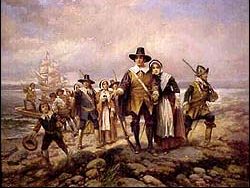 members of the Wampanoag tribe, and in March they signed a peace treaty with a tribal chief, Massasoit. Aided by the Wampanoag, especially the English-speaking Squanto, the Pilgrims were able to plant crops…especially corn and beans…that were vital to their survival. The Mayflower and its crew left Plymouth to return to England on April 5, 1621.
members of the Wampanoag tribe, and in March they signed a peace treaty with a tribal chief, Massasoit. Aided by the Wampanoag, especially the English-speaking Squanto, the Pilgrims were able to plant crops…especially corn and beans…that were vital to their survival. The Mayflower and its crew left Plymouth to return to England on April 5, 1621.
Over the next several decades, more and more settlers made the trip across the Atlantic to Plymouth, which gradually grew into a prosperous shipbuilding and fishing center. In 1691, Plymouth was incorporated into the new Massachusetts Bay Association, ending its history as an independent colony. And the rest, as they say, is history.
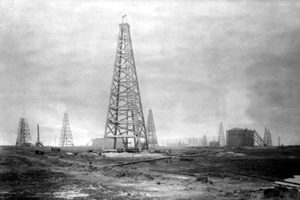 While most of the economy in Southeast Texas depended on agriculture, cattle ranching, and the lumber business in the 19th century, things were about to change. The presence of oil was known, but untapped until 1901 when the oil industry would change the landscape of the region. Uses for oil date back many years. In the 1500s, the Spanish used oil from seeps near Sabine Pass for caulking their ships, and to the north, settlers near Nacogdoches used seeping oil for lubricants before 1800. There were numerous discoveries in east and central Texas in the later 1800s, especially at Corsicana in 1896. Attempts were made to drill wells at Spindletop 1893 and 1896 and at Sour Lake in 1896, but they had no successful oil production along the Gulf Coast until the Lucas Gusher came in on Spindletop Hill on January 10, 1901.
While most of the economy in Southeast Texas depended on agriculture, cattle ranching, and the lumber business in the 19th century, things were about to change. The presence of oil was known, but untapped until 1901 when the oil industry would change the landscape of the region. Uses for oil date back many years. In the 1500s, the Spanish used oil from seeps near Sabine Pass for caulking their ships, and to the north, settlers near Nacogdoches used seeping oil for lubricants before 1800. There were numerous discoveries in east and central Texas in the later 1800s, especially at Corsicana in 1896. Attempts were made to drill wells at Spindletop 1893 and 1896 and at Sour Lake in 1896, but they had no successful oil production along the Gulf Coast until the Lucas Gusher came in on Spindletop Hill on January 10, 1901.
Spindletop Hill was a salt dome oil field, that was located in the southern portion of Beaumont, Texas. People had long suspected that oil might be under the hill as the area had been known for its sulfur springs and 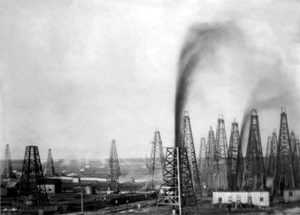 bubbling gas seepages that would ignite if lit. Then in August, 1892, several men including George W. O’Brien, George W. Carroll, and Pattillo Higgins formed the Gladys City Oil, Gas, and Manufacturing Company to do exploratory drilling on Spindletop Hill.
bubbling gas seepages that would ignite if lit. Then in August, 1892, several men including George W. O’Brien, George W. Carroll, and Pattillo Higgins formed the Gladys City Oil, Gas, and Manufacturing Company to do exploratory drilling on Spindletop Hill.
By September 1901, there were at least six successful wells on Gladys City Company lands. Wild speculation drove land prices around Spindletop to incredible heights. One man who had been trying to sell his tract there for $150 for three years sold his land for $20,000; the buyer promptly sold to another investor within fifteen minutes for $50,000. One well, representing an initial investment of under $10,000, was sold for $1,250,000. Legal entanglements and multimillion-dollar deals became almost commonplace. An estimated $235 million had been invested in oil that year in Texas; while some had made fortunes, others lost everything.
Following the success of the oil industry at Spindletop Hill, many people, including my grandparents, Allen and 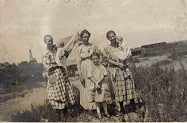 Anna Spencer would make their way to Texas in search of a better life. They would settle on the oilfields near Ranger, Texas. They didn’t find any oil fields, so their income came from his work for other people in the oilfields. These days people working in the oilfield business make good money, but as near as I can tell oilfield workers averaged about 90 cents an hour in 1919, which would be about $11.74 an hour today. That’s pretty poor wages, especially for the oilfield, but I suppose people didn’t realize how valuable they really were. Needless to say, the oilfield was not the place my grandfather would choose to make his living, and eventually they returned to Wisconsin where he went to work for the railroad.
Anna Spencer would make their way to Texas in search of a better life. They would settle on the oilfields near Ranger, Texas. They didn’t find any oil fields, so their income came from his work for other people in the oilfields. These days people working in the oilfield business make good money, but as near as I can tell oilfield workers averaged about 90 cents an hour in 1919, which would be about $11.74 an hour today. That’s pretty poor wages, especially for the oilfield, but I suppose people didn’t realize how valuable they really were. Needless to say, the oilfield was not the place my grandfather would choose to make his living, and eventually they returned to Wisconsin where he went to work for the railroad.
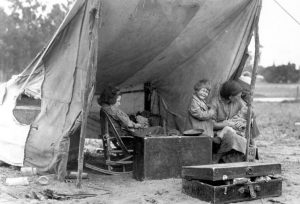
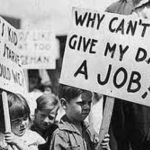 Following the Crash of 1929, which occurred on October 29, 1929, people quickly found that the jobs they thought were secure, were not only not secure, they were gone. That day became known as Black Tuesday. It was the day the stock market took a huge hit, as investors traded some 16 million shares on the New York Stock Exchange in a single day. Billions of dollars were lost, wiping out thousands of investors. The Great Depression followed the crash of 1929…banks failed, businesses closed, city streets were desolate, families lost their homes, and unemployment in rose to nearly 25%. The crash was the culmination of many years of economic instability. In the middle part of the United States, the depression occurred during the drought season. The farmers quickly lost their lands, because their crops died out, and many became migrant workers. They traveled around the country, hoping to find work for all members of the family in exchange for a meal or a place to sleep. Husbands and fathers traveled great distances from their homes in search of any work that they could find. There was no work…anywhere. Times were just about the worst they could possibly be.
Following the Crash of 1929, which occurred on October 29, 1929, people quickly found that the jobs they thought were secure, were not only not secure, they were gone. That day became known as Black Tuesday. It was the day the stock market took a huge hit, as investors traded some 16 million shares on the New York Stock Exchange in a single day. Billions of dollars were lost, wiping out thousands of investors. The Great Depression followed the crash of 1929…banks failed, businesses closed, city streets were desolate, families lost their homes, and unemployment in rose to nearly 25%. The crash was the culmination of many years of economic instability. In the middle part of the United States, the depression occurred during the drought season. The farmers quickly lost their lands, because their crops died out, and many became migrant workers. They traveled around the country, hoping to find work for all members of the family in exchange for a meal or a place to sleep. Husbands and fathers traveled great distances from their homes in search of any work that they could find. There was no work…anywhere. Times were just about the worst they could possibly be.
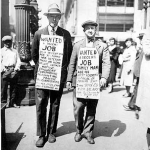
Architects, bankers, engineers and educators suddenly found themselves standing in long unemployment lines, competing for menial, basic jobs with pay that was barely enough to put food on their tables. Men who had defined themselves by taking care of their families, being the breadwinner, struggled with the emotional depression that came with the economic depression. As men traveled farther and farther away from home looking for jobs, they are forced to find lodging in public housing or shelters, waking up to begin job hunting again the next morning. Husbands and fathers who had previously earned enough money to feed and clothe their families were forced to stand in bread lines to receive free food so their families would not starve.
People became so desperate for work. As men went from town to town, they were met with billboard signs telling them to keep going, because there was no work in the town. Men with families even got their children involved, carrying signs asking why no one would hire their dad. Then men started wearing their resume on cardboard placards that they wore as they walked along. It seemed incredulous to the men who had been in higher paid jobs, that they could no longer find work…even with their qualifications. Signs like one saying, “I know 3 trades, I speak 3 languages, fought for 3 years, have 3 children and no work for 3 months. But I only 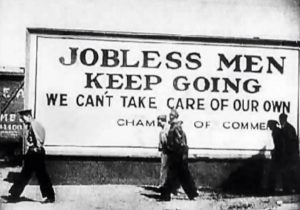
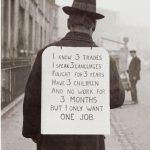 want one job,” appeared everywhere. Times couldn’t possibly get worse. While there’s no consensus about the exact end of the Great Depression among economic historians, the unemployment rate remained high for the rest of the 1930s, even as the banking crisis eased up. One major event, however, shifted the focus of the country away from the Great Depression. After the Japanese attack on Pearl Harbor on December 7, 1941, millions of men and women would join the work force as the US entered World War II.
want one job,” appeared everywhere. Times couldn’t possibly get worse. While there’s no consensus about the exact end of the Great Depression among economic historians, the unemployment rate remained high for the rest of the 1930s, even as the banking crisis eased up. One major event, however, shifted the focus of the country away from the Great Depression. After the Japanese attack on Pearl Harbor on December 7, 1941, millions of men and women would join the work force as the US entered World War II.
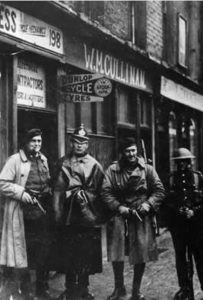 In 1536, Henry VIII decided to conquer Ireland and bring it under crown control. From that time forward until 1920, all of Ireland was a part of the British Isles. The British Isles is a geographical term which includes two large islands, Great Britain and Ireland, and 5,000 small islands, most notably the Isle of Man which has its own parliament and laws. Today, only Northern Ireland remains, as part of the United Kingdom.
In 1536, Henry VIII decided to conquer Ireland and bring it under crown control. From that time forward until 1920, all of Ireland was a part of the British Isles. The British Isles is a geographical term which includes two large islands, Great Britain and Ireland, and 5,000 small islands, most notably the Isle of Man which has its own parliament and laws. Today, only Northern Ireland remains, as part of the United Kingdom.
For the most part, the Irish War of Independence, also called the Anglo-Irish War, was a guerrilla conflict and most of the fighting was conducted on a small scale by the standards of conventional warfare. Although there were some large-scale encounters between the Irish Republican Army and the state forces of the United Kingdom. The Auxiliary Division of the Royal Irish Constabulary (ADRIC), generally known as the Auxiliaries or Auxies, was a paramilitary unit of the Royal Irish Constabulary (RIC) during the War. It was set up in July 1920 and made up of former British Army officers, most of whom came from Great Britain. Its role was to conduct counter-insurgency operations against 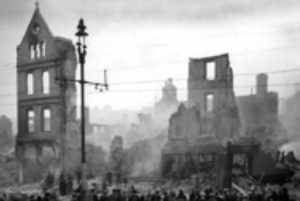 the Irish Republican Army (IRA). The Auxiliaries became infamous for their reprisals on civilians and civilian property in revenge for IRA actions, the best known example of which was the burning of Cork city in December 1920. The Black and Tans officially the Royal Irish Constabulary Special Reserve, was a force of temporary constables recruited to assist the Royal Irish Constabulary (RIC) during the war. The force was the brainchild of Winston Churchill, then British Secretary of State for War. Recruitment began in Great Britain in late 1919. Thousands of men, many of them British Army veterans of World War I, answered the British government’s call for recruits.
the Irish Republican Army (IRA). The Auxiliaries became infamous for their reprisals on civilians and civilian property in revenge for IRA actions, the best known example of which was the burning of Cork city in December 1920. The Black and Tans officially the Royal Irish Constabulary Special Reserve, was a force of temporary constables recruited to assist the Royal Irish Constabulary (RIC) during the war. The force was the brainchild of Winston Churchill, then British Secretary of State for War. Recruitment began in Great Britain in late 1919. Thousands of men, many of them British Army veterans of World War I, answered the British government’s call for recruits.
The war continued on and by November 1920, around 300 people had been killed in the conflict. Then, there 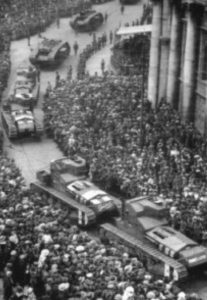 was an escalation of violence beginning on Bloody Sunday, November 21, 1920, fourteen British intelligence operatives were assassinated in Dublin in the morning. Then, in retaliation, the afternoon the RIC opened fire on a crowd at a Gaelic football match in the city, killing fourteen civilians and wounding 65. A week later, seventeen Auxiliaries were killed by the IRA in the Kilmichael Ambush in County Cork. In retaliation, the British government declared martial law in much of southern Ireland. The centre of Cork City was burnt out by British forces on December 10, 1920. Violence continued to escalate over the next seven months, when 1,000 people were killed and 4,500 republicans were interned. Much of the fighting took place in Munster (particularly County Cork), Dublin and Belfast, which together saw over 75 percent of the conflict deaths. Violence in Ulster, especially Belfast, was notable for its sectarian character and its high number of Catholic civilians.
was an escalation of violence beginning on Bloody Sunday, November 21, 1920, fourteen British intelligence operatives were assassinated in Dublin in the morning. Then, in retaliation, the afternoon the RIC opened fire on a crowd at a Gaelic football match in the city, killing fourteen civilians and wounding 65. A week later, seventeen Auxiliaries were killed by the IRA in the Kilmichael Ambush in County Cork. In retaliation, the British government declared martial law in much of southern Ireland. The centre of Cork City was burnt out by British forces on December 10, 1920. Violence continued to escalate over the next seven months, when 1,000 people were killed and 4,500 republicans were interned. Much of the fighting took place in Munster (particularly County Cork), Dublin and Belfast, which together saw over 75 percent of the conflict deaths. Violence in Ulster, especially Belfast, was notable for its sectarian character and its high number of Catholic civilians.
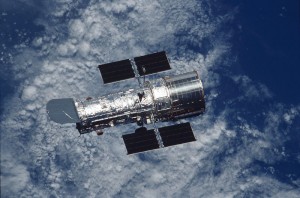 When most of us think of outer space, we think of a place that is quiet and still, like floating through a vacuum. I suppose that some of that is true, but while things do float around in space, they can also crash into other things floating in space. I don’t know if collisions in space make a sound, but I suspect they do. I don’t know how two objects can collide quietly, but maybe the sound does occur, and then doesn’t carry. Whether there is a sound or not, those space collisions are not soft hits, and damage can occur.
When most of us think of outer space, we think of a place that is quiet and still, like floating through a vacuum. I suppose that some of that is true, but while things do float around in space, they can also crash into other things floating in space. I don’t know if collisions in space make a sound, but I suspect they do. I don’t know how two objects can collide quietly, but maybe the sound does occur, and then doesn’t carry. Whether there is a sound or not, those space collisions are not soft hits, and damage can occur.
After NASA first put the Hubble telescope in orbit in 1990, scientists realized that the telescope’s primary mirror had a flaw called spherical aberration. Basically, the outer edge of the mirror was ground too flat by a depth of 2.2 microns. That is about as thick as one-fiftieth the thickness of a human hair. I don’t know how that could make much difference, but this aberration resulted in images that were fuzzy because some of the light from the objects being studied was being scattered. While this was not caused by other objects in space, it had to be repaired anyway. The Corrective Optics Space Telescope Axial Replacement, or COSTAR, was developed as an effective means of countering the effects of the flawed shape of the mirror. COSTAR was a telephone booth sized instrument which placed 5 pairs of corrective mirrors, some as small as a nickel coin, in front of the Faint Object Camera, the Faint Object Spectrograph and the Goddard High Resolution Spectrograph. The fix worked, and while this was not the only repair job done on the Hubble Telescope, it was the first.
NASA arranged a repair mission SM1, or Shuttle Mission: STS-61 to make the repair. The mission took place on 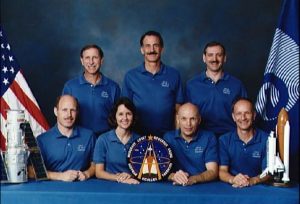 December 2-13, 1993 in the Shuttle Endeavor. The mission, however, was not just to fix a flaw in the original design, which would have been logical when we think of how much we depend on the Hubble Telescope, but the crew also installed and replaced other components including: Solar Arrays, Solar Array Drive Electronics (SADE), Magnetometers, Coprocessors for the flight computer, Two Rate Sensor Units, Two Gyroscope Electronic Control Units, and a GHRS Redundancy Kit. The crew included Commander Richard O. Covey, Pilot Kenneth D. Bowersox, Payload Commander F. Story Musgrave and Mission Specialists Kathryn C. Thornton, Claude Nicollier, Jeffrey A. Hoffman and Tom Akers. The mission successfully made the repairs to Hubble.
December 2-13, 1993 in the Shuttle Endeavor. The mission, however, was not just to fix a flaw in the original design, which would have been logical when we think of how much we depend on the Hubble Telescope, but the crew also installed and replaced other components including: Solar Arrays, Solar Array Drive Electronics (SADE), Magnetometers, Coprocessors for the flight computer, Two Rate Sensor Units, Two Gyroscope Electronic Control Units, and a GHRS Redundancy Kit. The crew included Commander Richard O. Covey, Pilot Kenneth D. Bowersox, Payload Commander F. Story Musgrave and Mission Specialists Kathryn C. Thornton, Claude Nicollier, Jeffrey A. Hoffman and Tom Akers. The mission successfully made the repairs to Hubble.
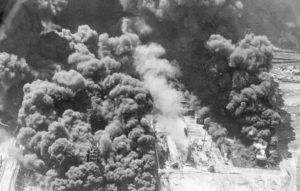 Coal mining, especially underground coal mining can be a dangerous occupation. No matter how hard the safety coordinators tried to keep people safe, and no matter how stringent the safety regulations were, accidents happened and sometimes, lives were lost. Coal mining was especially dangerous when coal dust ignited. Explosions were the main cause of death in the mines,especially the underground mines. And that was just the instantaneous death. Breathing the dust caused a slow death over time. In 1883, the creation of the Norfolk and Western Railway opened a gateway to the untapped coalfields of southwestern West Virginia. New mining towns sprung up in the region practically overnight, with European immigrants and African Americans from the south pouring into southern West Virginia looking for work in the new industry. By the late 19th century, West Virginia was a national leader in the production of coal,but the state fell far behind other major coal-producing states in regulating the mining conditions. In addition to poor economic conditions, West Virginia had a higher mine death rate than any other state. Nationwide, a total of 3,242 Americans were killed in mine accidents in 1907, but no one accident could compare to the accident that was about to unfold as the year neared its end. No on was prepared for the horror that was to come in Monongah in December.
Coal mining, especially underground coal mining can be a dangerous occupation. No matter how hard the safety coordinators tried to keep people safe, and no matter how stringent the safety regulations were, accidents happened and sometimes, lives were lost. Coal mining was especially dangerous when coal dust ignited. Explosions were the main cause of death in the mines,especially the underground mines. And that was just the instantaneous death. Breathing the dust caused a slow death over time. In 1883, the creation of the Norfolk and Western Railway opened a gateway to the untapped coalfields of southwestern West Virginia. New mining towns sprung up in the region practically overnight, with European immigrants and African Americans from the south pouring into southern West Virginia looking for work in the new industry. By the late 19th century, West Virginia was a national leader in the production of coal,but the state fell far behind other major coal-producing states in regulating the mining conditions. In addition to poor economic conditions, West Virginia had a higher mine death rate than any other state. Nationwide, a total of 3,242 Americans were killed in mine accidents in 1907, but no one accident could compare to the accident that was about to unfold as the year neared its end. No on was prepared for the horror that was to come in Monongah in December.
The worst mining accident in United States occurred on December 6, 1907. The mine was the Monongah Coal 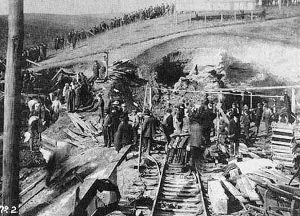 Mine in West Virginia’s Marion County. on that date, an explosion in a network of mines owned by the Fairmont Coal Company in Monongah killed 362 coal miners. Officially, there were 367 men in the two mines, but the actual number was much higher because officially registered workers often took their children and other relatives into the mine to help. No one thought of the practice as dangerous. At 10:28am an explosion occurred that killed most of the men inside the mine instantly. The blast went on to cause considerable damage to both the mine and the surface. The ventilation systems, necessary to keep fresh air supplied to the mine, were destroyed along with many rail cars and other equipment. The explosion blew the timbers supporting the roof down causing further issues when the roof collapsed. Investigators believed that an electrical spark or one of the miners’ open flame lamps ignited coal dust or methane gas, but the cause of the explosion was not determined.
Mine in West Virginia’s Marion County. on that date, an explosion in a network of mines owned by the Fairmont Coal Company in Monongah killed 362 coal miners. Officially, there were 367 men in the two mines, but the actual number was much higher because officially registered workers often took their children and other relatives into the mine to help. No one thought of the practice as dangerous. At 10:28am an explosion occurred that killed most of the men inside the mine instantly. The blast went on to cause considerable damage to both the mine and the surface. The ventilation systems, necessary to keep fresh air supplied to the mine, were destroyed along with many rail cars and other equipment. The explosion blew the timbers supporting the roof down causing further issues when the roof collapsed. Investigators believed that an electrical spark or one of the miners’ open flame lamps ignited coal dust or methane gas, but the cause of the explosion was not determined.
Time was of the essence to bring people out of a mine accident alive, because at that time they didn’t know much about restoring the air supply to the people trapped below. The first volunteer rescuers entered the two mines 25 minutes after the initial explosion. The biggest threats to rescuers are the various fumes, particularly “blackdamp”, a mix of carbon dioxide and nitrogen that contains no oxygen, and “whitedamp”, which is carbon monoxide. The lack of breathing apparatus at the time made venturing into these areas impossible. Rescuers could only stay in the mine for 15 minutes at a time. In a vain effort to protect themselves, some of the miners 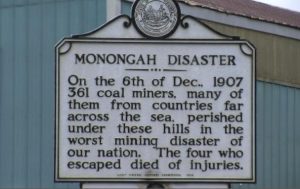 tried to cover their faces with jackets or other pieces of cloth. While this may filter out particulate matter, it would not protect the miners in an oxygen-free environment. The toxic fume problems were compounded by the infrastructural damage caused by the initial explosion…mines require large ventilation fans to prevent toxic gas buildup, and the explosion at Monongah had destroyed all of the ventilation equipment. The inability to clear the mine of gases transformed the rescue effort into a recovery effort. One Polish miner was rescued and four Italian miners escaped. Following the accident, the United Mine Workers of America labor union and sympathetic legislators forced safety regulations that brought a steady decline in death rates in West Virginia and elsewhere.
tried to cover their faces with jackets or other pieces of cloth. While this may filter out particulate matter, it would not protect the miners in an oxygen-free environment. The toxic fume problems were compounded by the infrastructural damage caused by the initial explosion…mines require large ventilation fans to prevent toxic gas buildup, and the explosion at Monongah had destroyed all of the ventilation equipment. The inability to clear the mine of gases transformed the rescue effort into a recovery effort. One Polish miner was rescued and four Italian miners escaped. Following the accident, the United Mine Workers of America labor union and sympathetic legislators forced safety regulations that brought a steady decline in death rates in West Virginia and elsewhere.
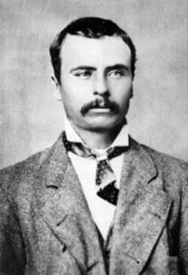 Deadwood, South Dakota maybe started out as an illegal town, but once it was established, there came a need for things like mail, supplies, and transportation, the latter of which brought the need for a stagecoach. The biggest problem with the stagecoach was the fact that the lawless element in the area thought it would be an easy target for robbery. The stagecoaches became a ride for the very brave. Soon it became apparent that the stagecoaches were going to need some protection.
Deadwood, South Dakota maybe started out as an illegal town, but once it was established, there came a need for things like mail, supplies, and transportation, the latter of which brought the need for a stagecoach. The biggest problem with the stagecoach was the fact that the lawless element in the area thought it would be an easy target for robbery. The stagecoaches became a ride for the very brave. Soon it became apparent that the stagecoaches were going to need some protection.
Daniel “Boone” May was born in Missouri in 1852. Going by the name of “Boone,” he was the son of Samuel and Nancy May, the seventh of nine children. Later, he moved with his family to Bourbon County, Kansas, where his father worked as a farmer. In 1876, “Boone” and his older brother moved to Cheyenne, Wyoming, where they worked in the freight business. During this time, the Black Hills were crawling with road agents and hostile Sioux Indians.It was a dangerous time to be working along the roadways in that area. Nevertheless, May did very well there, and he decided to buy a ranch between the Platte River and Deadwood by the end of that year.
“Boone’s” bravery and work ethic soon came to the attention of the stagecoach service, and he was soon recruited as a shotgun messenger for the Cheyenne and Black Hills Stage & Express Company. He also served as the station keeper at Robbers’ Roost in Wyoming Territory. Within just a few years, “Boone” was thought to have been in at least eight shooting incidents with outlaws. Many people said that he was the fastest gun in the Dakotas. His adventures soon became well known.
One of the first hold-ups “Boone” was involved in was in August, 1877, when a Deadwood Coach was intercepted at Robber’s Roost. On this occasion, even though “Boone” wanted to fight it out, he decided to lay down his weapons, because a woman and child were in the coach. The robbers made away with the passenger’s money, weapons and personal property. While they lost their things, I’m sure they decided that it was best to walk away with their lives. A short time later, “Boone” ran into one of the bandits, a man named Prescott Webb, in Deadwood and within no time, gunfire erupted between the two men. Though “Boone” was hit in the left wrist, he returned fire as Webb jumped on a horse to make his getaway. “Boone’s” shots hit Webb in the shoulder, and the horse several times, bringing it down. Webb was quickly arrested by Sheriff Seth Bullock and later that day, Webb’s companions who had aided in the robbery, were also arrested.
In 1878, stagecoaches known as “treasure coaches” were running regularly between Deadwood and Cheyenne. Their cargo was strong boxes filled with gold, as well as the U.S. Mail. These “treasure coach” stages often became the target of bandits, and after one of these coaches was held up on July 2, 1878, the U.S. Postal Service appointed a number of special agents to bring the outlaws to justice. “Boone” and ten other men were soon appointed as U.S. Deputy Marshals and equipped with good horses and ammunition. One of “Boone’s” first encounters with bandits as a U.S. Deputy Marshal occurred on the night of September 13, 1878. He and another messenger were trailing a Cheyenne bound coach which was approached by bandits near Old Woman’s Creek in the Wyoming Territory. “Boone” and another deputy, Zimmerman surprised the outlaws and shooting erupted. “Boone” wounded one bandit named Frank Towle and the others fled empty handed. Leaving their Towle wounded on the ground, the two messengers went after the other bandits but were unable to capture them. When they returned to the robbery site, Towle was gone.
On September 26, 1878, when “Boone” and other messengers were waiting to escort a coach at Beaver Station on the Wyoming-Dakota border, but the stage failed to show up. They went in search of the coach, and met another messenger who told them it had been robbed and a passenger killed. “Boone” quickly joined a posse to go after the outlaws, but they escaped. The following month, “Boone” learned of the hiding place of a robber named Archie McLaughlin and quickly went after him and his gang. Capturing them north of Cheyenne, the outlaws were sent under guard to Deadwood on the northbound coach. Unfortunately, the stage never make it, because on November 3, 1878, it was stopped by vigilantes who hanged Archie McLaughlin and another man named Billy Mansfield. The next month, “Boone” was in a posse that brought in a robber named Tom Price. The bandit tried to escape, and was wounded, and then was brought in. Late in 1879, “Boone” was sent to assist Special Agent William Llewellyn in the capture of a mail robber named Curley Grimes. They tracked the outlaw 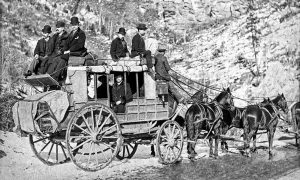 to Elk Creek, located halfway between Rapid City and Fort Meade where they arrested him. That night, as the group neared Fort Meade, Grimes attempted to escape and was shot and killed by “Boone” and Llewellyn. By this time, “Boone” had made such a reputation for himself that he became a target for many of the outlaws who repeatedly tried to assassinate him, unsuccessfully. “Boone” also worked as a messenger for the Black Hills Placer Mining Company in the summer of 1880, and was said to have killed at least one robbers during this time. A short time later, “Boone” resigned from the company and left the Black Hills. He turned up in Santiago, Chili in 1883. He shot an army officer in 1891, he fled to Brazil. He died of yellow fever in Rio de Janeiro in 1910.
to Elk Creek, located halfway between Rapid City and Fort Meade where they arrested him. That night, as the group neared Fort Meade, Grimes attempted to escape and was shot and killed by “Boone” and Llewellyn. By this time, “Boone” had made such a reputation for himself that he became a target for many of the outlaws who repeatedly tried to assassinate him, unsuccessfully. “Boone” also worked as a messenger for the Black Hills Placer Mining Company in the summer of 1880, and was said to have killed at least one robbers during this time. A short time later, “Boone” resigned from the company and left the Black Hills. He turned up in Santiago, Chili in 1883. He shot an army officer in 1891, he fled to Brazil. He died of yellow fever in Rio de Janeiro in 1910.
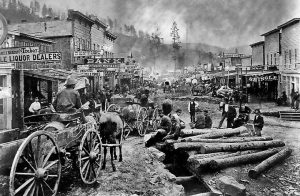 Anyone who has spent much time in the Black Hills has most likely seen Deadwood, and knows it to be a historic gambling town where many famous Wild West characters hung out and died. Legends like Wild Bill Hickok and Calamity Jane each left their mark. Hickok, a legendary man even in his own lifetime, was shot in the back of the head by Jack McCall, while playing poker at the No. 10 Saloon on August 2, 1876. Calamity Jane was renowned for her excellent marksmanship, as well as her preference for men’s clothing, and brash behavior.
Anyone who has spent much time in the Black Hills has most likely seen Deadwood, and knows it to be a historic gambling town where many famous Wild West characters hung out and died. Legends like Wild Bill Hickok and Calamity Jane each left their mark. Hickok, a legendary man even in his own lifetime, was shot in the back of the head by Jack McCall, while playing poker at the No. 10 Saloon on August 2, 1876. Calamity Jane was renowned for her excellent marksmanship, as well as her preference for men’s clothing, and brash behavior.
Deadwood also had, in addition to its tough individuals, others such as Reverend Henry W. Smith. Preacher Smith was the first Methodist minister to come to the Black Hills. Smith was mysteriously murdered on Sunday, August 20, 1876, while walking to Crook City to deliver a sermon. These individuals are just a few of the many notables buried in Mount Moriah Cemetary, which was established in 1877 or 1878.
That’s all well known to many people, but some may not know that the settlement of Deadwood began illegally in the 1870s on land which had been granted to the Native Americans. In 1874, Colonel George Armstrong Custer led an expedition into the Black Hills and announced the discovery of gold on French Creek near what is now Custer, South Dakota. That announcement ushered in the Black Hills Gold Rush and gave rise to the new and lawless town of Deadwood. In 1875, a miner named John Pearson found gold in a narrow canyon in the Northern Black Hills. This canyon became known as “Deadwood Gulch,” because of the many dead trees that lined the canyon walls at that time. The name stuck. Try as they might, the government couldn’t keep the situation under wraps, in order to honor the 1868 Treaty of Fort Laramie, which forever ceded the Black Hills to the Lakota-Sioux. The government dispatched several military units to forts in the surrounding area to keep people from entering the Hills. However, people illegally entered the area anyway, searching for gold or adventure. Despite the efforts of the military and federal government. They were driven by dreams and greed.
Once Deadwood was established, the mining camp was quickly swarming with thousands of prospectors searching for an easy way to get rich. Fred and Moses Manuel, claimed the Homestake Mine, which proved to be the most profitable in the area. Although the Manuels had been lucky, others were not so fortunate. Most of the early population was in Deadwood to mine for gold, but the lawless town naturally attracted a crowd of rough and shady characters too. These particular individuals made the early days of Deadwood rough and wild. 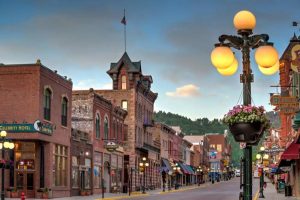 A mostly male population eagerly patronized the many saloons, gambling establishments, dance halls, and brothels. These establishments were considered legitimate businesses and were well known throughout the area.
A mostly male population eagerly patronized the many saloons, gambling establishments, dance halls, and brothels. These establishments were considered legitimate businesses and were well known throughout the area.
In 1890, the railroad connected the town to the outside world. Illegal beginnings aside, Deadwood was a town that was now here to stay. The treaty with the Lakota-Sioux was broken and the Black Hills would never again belong to them. As unfair as it was to break the treaty, I don’t think that it could have lasted forever anyway, because the United Stated was going to be populated from coast to coast one way or the other.
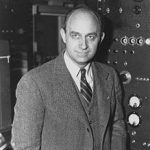
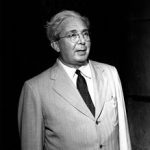 It’s no secret that various governments have had secret projects over the years to create bigger and better weapons of war to be used against enemy governments in the event of a war. I think that there are those who believe that only rogue countries do this sort of thing, but that isn’t so. In the United States, where Enrico Fermi, an Italian physicist and the creator of the world’s first nuclear reactor, and Leó Szilárd a Hungarian-German physicist and inventor; had both emigrated to America, the discovery of the nuclear chain reaction led to the creation of the first man-made reactor, known as Chicago Pile-1, which achieved criticality on December 2, 1942. This work became part of the Manhattan Project, a massive secret U.S. government military project to make enriched uranium and by building large production reactors to produce enriched plutonium for use in the first nuclear weapons. The United States would test an atom bomb in July 1945 with the Trinity test, and eventually two such weapons were used in the atomic bombings of Hiroshima and Nagasaki. Of course, weapons of warfare are not the only use for nuclear power, but they are what most of us think about when we think about going nuclear.
It’s no secret that various governments have had secret projects over the years to create bigger and better weapons of war to be used against enemy governments in the event of a war. I think that there are those who believe that only rogue countries do this sort of thing, but that isn’t so. In the United States, where Enrico Fermi, an Italian physicist and the creator of the world’s first nuclear reactor, and Leó Szilárd a Hungarian-German physicist and inventor; had both emigrated to America, the discovery of the nuclear chain reaction led to the creation of the first man-made reactor, known as Chicago Pile-1, which achieved criticality on December 2, 1942. This work became part of the Manhattan Project, a massive secret U.S. government military project to make enriched uranium and by building large production reactors to produce enriched plutonium for use in the first nuclear weapons. The United States would test an atom bomb in July 1945 with the Trinity test, and eventually two such weapons were used in the atomic bombings of Hiroshima and Nagasaki. Of course, weapons of warfare are not the only use for nuclear power, but they are what most of us think about when we think about going nuclear.
In reality, much more has come from nuclear energy. In August 1945, the pocketbook The Atomic Age, became the first widely distributed account of nuclear energy. It discussed the peaceful future uses of nuclear energy and painted a picture of a future where fossil fuels would go unused. Nobel laureate Glenn Seaborg, who later chaired the Atomic Energy Commission, is quoted as saying “there will be nuclear powered earth-to-moon shuttles, nuclear powered artificial hearts, plutonium heated swimming pools for SCUBA divers, and much more.” Then, on December 20, 1951, came the first light bulbs ever lit by electricity generated by nuclear power at EBR-1 at Argonne National Laboratory West.
Nuclear power is still producing electricity today. The United States has more than 100 reactors, although it creates most of its electricity from fossil fuels and hydroelectric energy. Nations such as Lithuania, France, and Slovakia create almost all of their electricity from nuclear power plants. Uranium is the fuel most widely used to produce nuclear energy. I think most people have heard of the disasters at Chernobyl, April 26, 1986, Kyshtym, September 29, 1957, Three Mile Island, March 28, 1979, and Windscale, October 10, 1957. Some were worse than others, but all were scary situations. I don’t know how I feel about the use of nuclear power as opposed to fossil fuels, hydroelectric energy, or wind energy, because I think that quite possibly each has their place, and that it would be difficult to rely on just one type of fuel.
The United Kingdom, Canada, and the USSR continued to research and develop nuclear industries over the course of the late 1940s and early 1950s. Electricity was first generated by a nuclear reactor on December 20, 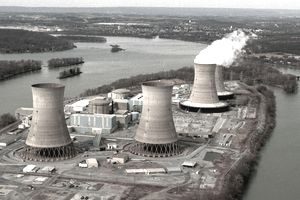 1951, at the EBR-I experimental station near Arco, Idaho, which initially produced about 100 kW. In the United States work was also strongly researched on nuclear marine propulsion, with a test reactor being developed by 1953…eventually, the USS Nautilus, the first nuclear-powered submarine, would launch in 1955. Then, in 1953, President Dwight Eisenhower gave his “Atoms for Peace” speech at the United Nations. In it he emphasized the need to develop “peaceful” uses of nuclear power quickly. The concern was over any further us in war situations. This was followed by the 1954 Amendments to the Atomic Energy Act which allowed rapid declassification of United States reactor technology and encouraged development by the private sector.
1951, at the EBR-I experimental station near Arco, Idaho, which initially produced about 100 kW. In the United States work was also strongly researched on nuclear marine propulsion, with a test reactor being developed by 1953…eventually, the USS Nautilus, the first nuclear-powered submarine, would launch in 1955. Then, in 1953, President Dwight Eisenhower gave his “Atoms for Peace” speech at the United Nations. In it he emphasized the need to develop “peaceful” uses of nuclear power quickly. The concern was over any further us in war situations. This was followed by the 1954 Amendments to the Atomic Energy Act which allowed rapid declassification of United States reactor technology and encouraged development by the private sector.

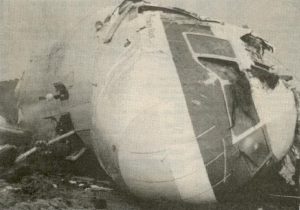 Recently, I became interested is unusual military bases, after coming across on called RAF Rudloe Manor…an English military base that looked, and in fact was an old English manor. Another military base, this one in the United States, in Virginia, near Dulles International Airport, has now come to my attention, but for multiple reasons. Mount Weather Emergency Operations Center is a civilian command facility in the US Commonwealth of Virginia, used as the center of operations for the Federal Emergency Management Agency (FEMA). Also known as the High Point Special Facility (HPSF), its preferred designation since 1991 is “SF”.
Recently, I became interested is unusual military bases, after coming across on called RAF Rudloe Manor…an English military base that looked, and in fact was an old English manor. Another military base, this one in the United States, in Virginia, near Dulles International Airport, has now come to my attention, but for multiple reasons. Mount Weather Emergency Operations Center is a civilian command facility in the US Commonwealth of Virginia, used as the center of operations for the Federal Emergency Management Agency (FEMA). Also known as the High Point Special Facility (HPSF), its preferred designation since 1991 is “SF”.
Mount Weather Emergency Operations Center gained some “fame” for a completely different reason in 1974. December 1, 1974 was a windy, stormy day in the Washington DC area. Trans World Airlines Flight 514 was en route from Indianapolis, Indiana, and Columbus, Ohio, to Washington Dulles International Airport, but was originally supposed to land at Washington National Airport. The Boeing 727-231, registration N54328, was diverted to Dulles when high crosswinds, east at 32 mph and gusting to 56 mph, prevented safe operations on the main north-south runway at Washington National. The flight was being vectored for a non-precision instrument approach to runway 12 at Dulles. Air traffic controllers cleared the flight down to 7,000 feet before clearing them for the approach while not on a published segment. At this point, there was some confusion in the cockpit over whether they were still under a radar-controlled approach segment which would allow them to descend safely, or not. The jetliner began a descent to 1,800 feet, shown on the first checkpoint for the published approach. After reaching 1,800 feet there were some 100 to 200 foot altitude deviations which the flight crew discussed as encountering heavy downdrafts and reduced visibility in snow. Nevertheless, their tower controlled approach had ended.
In the stormy conditions, late on that Sunday morning, the aircraft was in controlled flight, when it impacted a low mountain about thirty miles northwest of its revised destination. That mountain was Mount Weather, Virginia, where the Mount Weather Emergency Operations Center was located. The plane impacted the west slope of Mount Weather at 1,670 feet above sea level at approximately 265 mph. The wreckage was contained within an area about 900 by 200 feet. The evidence of first impact were trees sheared off about 70 feet above the ground…the elevation at the base of the trees was 1,650 feet. All 92 aboard, 85 passengers and seven crew members, were killed. “The wreckage path was oriented along a line 118 degrees magnetic. Calculations indicated that the left wing went down about six degrees as the aircraft passed through the trees and the aircraft was descending at an angle of about one degree. After about five hundred feet of travel through the trees, it struck a rock outcropping at an elevation of about 1,675 feet. Numerous heavy components of the aircraft were thrown forward of the outcropping, and numerous intense post-impact fires broke out which were later extinguished. The mountain’s summit is at 1,754 feet above sea level.”
“The accident investigation board was split in its decision as to whether the flight crew or Air Traffic Control were responsible. The majority absolved the controllers as the plane was not on a published approach segment; the dissenting opinion was that the flight had been radar vectored. Terminology between pilots and controllers differed without either group being aware of the discrepancy. It was common practice at the time for controllers to release a flight to its own navigation with “Cleared for the approach,” and flight crews commonly believed that was also authorization to descend to the altitude at which the final segment of the approach began. No clear indication had been given by controllers to Flight 514 that they were no longer on a radar vector segment and therefore responsible for their own navigation. Procedures were clarified after this accident. Controllers now state, “Maintain (specified altitude) until established on a portion of the approach,” and pilots now understand that previously assigned altitudes prevail until an altitude change is authorized on the published approach segment the aircraft is currently flying. Ground proximity detection equipment was also mandated for the airlines.”
During the NTSB investigation, it was discovered that a United Airlines flight had very narrowly escaped the same fate during the same approach and at the same location only six weeks prior. Apparently, the problem was bigger than it was first thought to be. The crash is also noteworthy, because of the accident location. The undesired attention to the Mount Weather facility, became the unfortunate side effect, because the site was the linchpin of plans implemented by the federal government to ensure continuity in the event of a nuclear war. 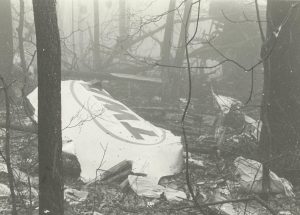
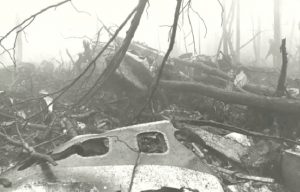 The crash did not damage the facility, since most of its features were underground. Only its underground main phone line was severed, with service to the complex being restored by C&P Telephone within 2½ hours after the crash. Nevertheless, the crash brought to light the possibility of damage to an important facility by a plane crash, which was a distinct possibility due to the flight path of planes landing at Dulles International Airport.
The crash did not damage the facility, since most of its features were underground. Only its underground main phone line was severed, with service to the complex being restored by C&P Telephone within 2½ hours after the crash. Nevertheless, the crash brought to light the possibility of damage to an important facility by a plane crash, which was a distinct possibility due to the flight path of planes landing at Dulles International Airport.

